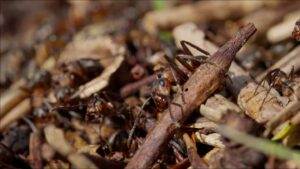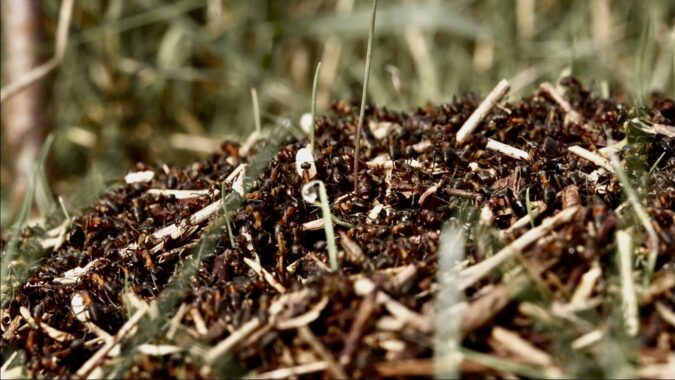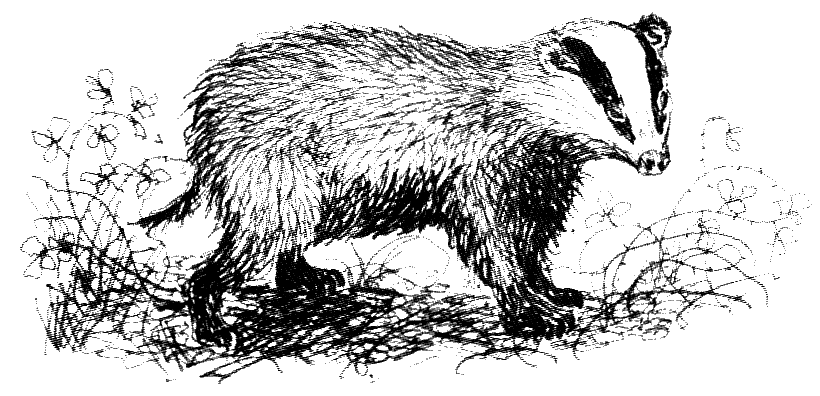The work of ants in woodlands.

At first, you might not notice them, but ants in a woodland are important. Their presence indicates healthy woodland, and the Forestry Commission recognises them as a ‘keystone species’ in the woodland / forest ecosystem and encourages woodland owners to treat them sympathetically. Ants, like bees and wasps, belong to a group of insects known as the Hymenoptera . These are insects with membranous wings and narrow ‘waists’. Like bees, ants are ‘social insects’ and within their nests, there is a division of labour (workers, soldiers, queens). There are four main species of true wood ant - Formica rufa, F. aquilonia, F. lugubris and F. pratensis.
Ants are important for a number of reasons, for example :-
- They help disperse seeds.
- They manage pests by preying on herbivorous insects that damage leaves
- They contribute to nutrient recycling, t
- Their nests provide a habitat for a whole range of invertebrates that live specifically in wood ant nests. For example, the woodlouse (Platyarthrus hoffmannseggii), which has ‘lost’ its eyes and colour and is completely adapted to living in the dark recesses of the ants’ nests.
- They are a source of food for various predators including woodpeckers.
- Through the building of nests, they affect the soil profile, the drainage and permeability of the top soil, and help with the distribution of various nutrients.
 A wood ant colony nest can persist for many years and survives so long as there is a queen / s present. During the winter months, only queens and a limited number of the workers live on deep inside the nest. Once the temperature begins to rise in the Spring, then workers will begin to emerge and start to forage – and the queen(s) will begin to start laying eggs again. Fertilised eggs will give rise to female ants, and unfertilized eggs give rise to males. The males and queens have wings, and are bigger than the workers. The life expectancy of a worker is about 60 days.
A wood ant colony nest can persist for many years and survives so long as there is a queen / s present. During the winter months, only queens and a limited number of the workers live on deep inside the nest. Once the temperature begins to rise in the Spring, then workers will begin to emerge and start to forage – and the queen(s) will begin to start laying eggs again. Fertilised eggs will give rise to female ants, and unfertilized eggs give rise to males. The males and queens have wings, and are bigger than the workers. The life expectancy of a worker is about 60 days.
Ants such as the southern wood ant [Formica rufa]. build large, ‘thatched’ nests, (see the film link below) which may contain many thousands of workers and queens (up to a quarter of a million). An ant nest is instantly recognisable, it looks like a roughly shaped dome, made from an untidy heap of leaves and twigs – with ant trails leading to and from. The heart of the nest is deep underground, whilst on the surface is the dome shaped ‘thatch’. The thatch consists of a variety materials in the thatch – small twigs, moss, heather, pine needles.
 These materials are positioned so that they
These materials are positioned so that they
- not only intercept the sun’s rays to help warm the nest
- but also are laid in such a way that water / rain runs away from the nest, reducing the risk of flooding.
Some ant species build their nests in /on gravel or sandy / stony soils - which reduces the risk of water logging.
Like many insects, ants make use of pheromones (volatile chemicals). For example, to lay paths to the nest. The study of ant trails and ant behaviour has inspired computer programs / simulations to the “travelling salesman problem”, that is finding the shortest route round a large number of fixed locations (think of the Amazon’s driver’s day!

Woodlands TV has produced another film that focuses on woodland ants. The film, presented by Giles Pitman, can be seen either on this website or on YouTube https://youtu.be/9wtvwlL2Wzg.
Interesting fact : Ants can spray formic acid from their abdomen – when threatened. This smells like vinegar and is thought to be a deterrent to birds or other predators.
Comments are closed for this post.
